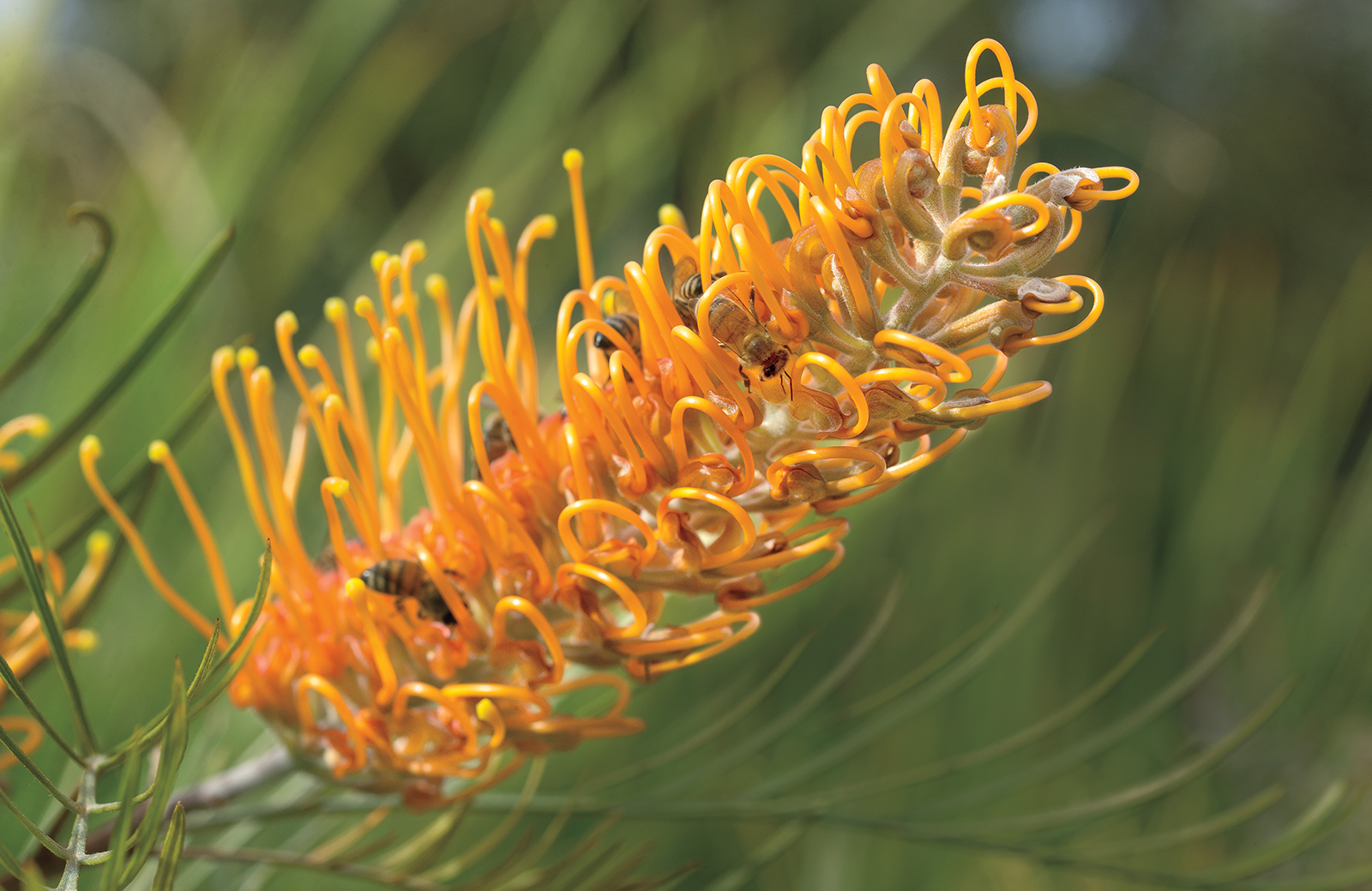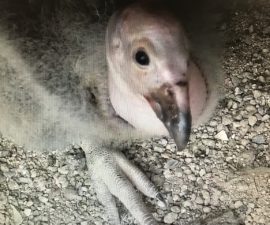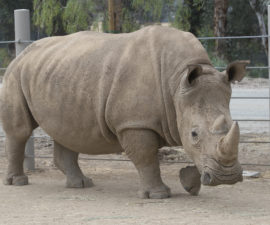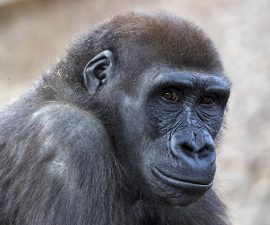While Walkabout Australia’s pathways and buildings were taking shape, the Safari Park’s horticulture team researched, procured, and nurtured nearly 200 species of Australian flora to set the scene—all “fair dinkum,” the genuine article!
BY Wendy Perkins
Photography by Tammy Spratt
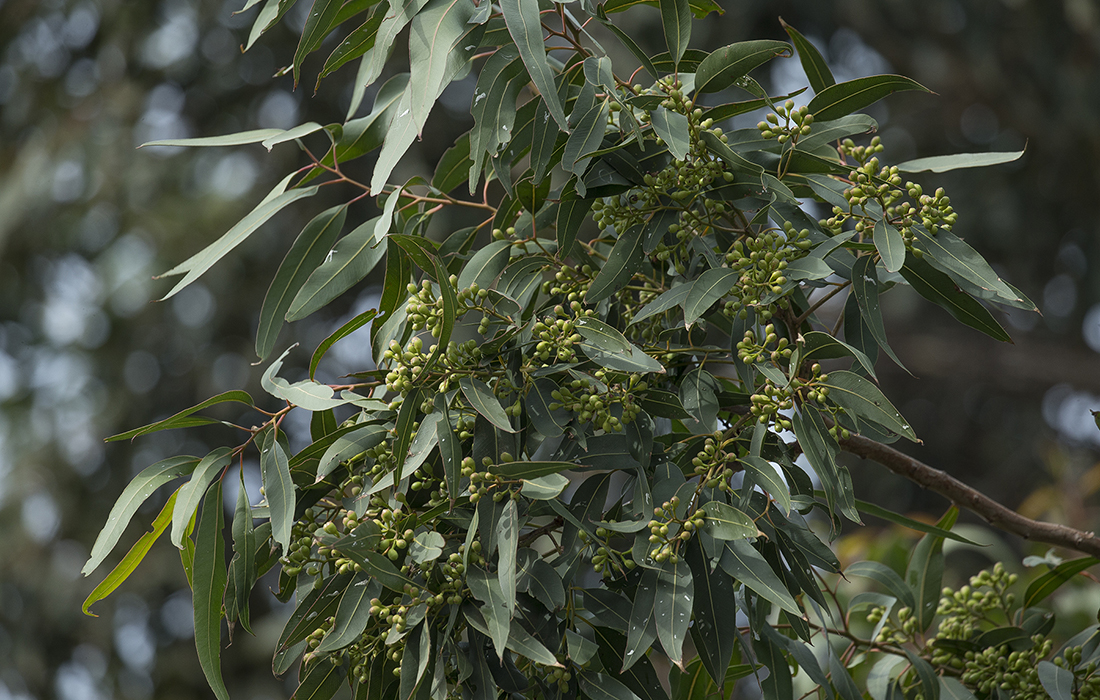
HEAVENLY SCENT
Lemon-scented gum trees Corymbia citriodora add citrus notes to the classic camphor-like eucalyptus scent, perfuming the air as you explore Walkabout Australia.
Australian Icons
For many people, nothing says Australia like eucalyptus trees, so of course they’re part of the Walkabout Australia experience. Lemon-scented gums, silverdollar, willow peppermint, and ghost gum are all members of the Eucalyptus genus to keep an eye—and nose—out for. Breathe deep and take in the energizing scent of eucalyptus. The scent these trees are known for comes from a waxy oil on the leaves that also helps seal in moisture—one of many adaptations to drought conditions.
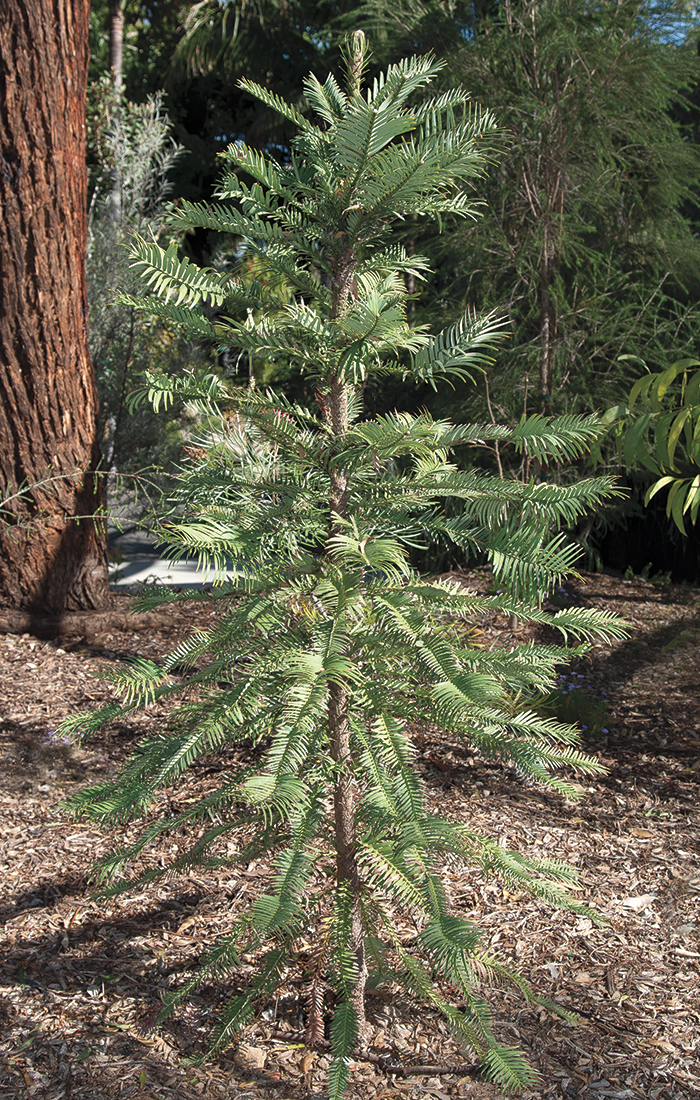
TREASURES OUT OF TIME
The young Wollemi pines in Walkabout Australia give guests a chance to discover the story of one of the greatest botanical discoveries in our time.
Living Fossils
We are thrilled to share the story of one of the rarest plants in the world, the Wollemi pine Wollemia nobilis. It is commonly called a pine, but it actually belongs to the ancient Araucariacae family of coniferous trees. “Wollemi” is an Australian aboriginal word meaning “look around you, keep your eyes open, and watch out.” It’s a good name—this critically endangered plant was believed to be extinct, but some were found in Australia’s rugged Blue Mountains in 1994. To date, fewer than 100 specimens are known to exist in the wild. Their locations are kept a secret, but plant fanciers are able to obtain seeds to grow, helping the gene pool expand.
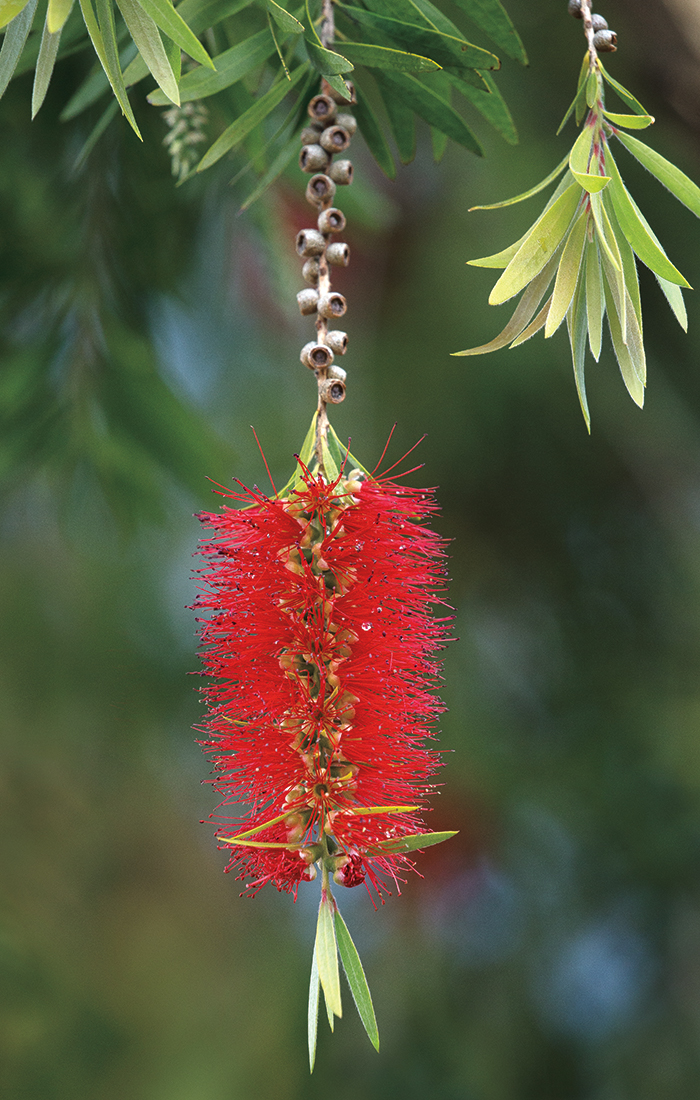
THE LOOK
If it’s possible to seem nonchalant (just hanging there…) and showstopping (that color; that texture!), the bottlebrush tree is it.
A Brush with Beauty
With brilliant-hued flowers and shaggy bark, a bottlebrush tree Callistemon sp. is vital to its habitat. The structure that gives the plant its common name is not a single flower, but an inflorescence—many tiny blooms sprouting from a stalk. Those are the stamens you see—the petals are hidden beneath. The showstopping bristly blooms don’t have much of a scent, but they don’t need to; the bold color alone attracts the attention of pollinators. While the bottlebrush plant benefits from its pollen deliverers, it “gives back” as well. Bottlebrush nectar is an important food source for birds, insects, and some mammals. And as the tree’s bark sheds, the “litter” creates food and shelter for ground-dwelling insects, and breaks down to return nutrients to the soil.
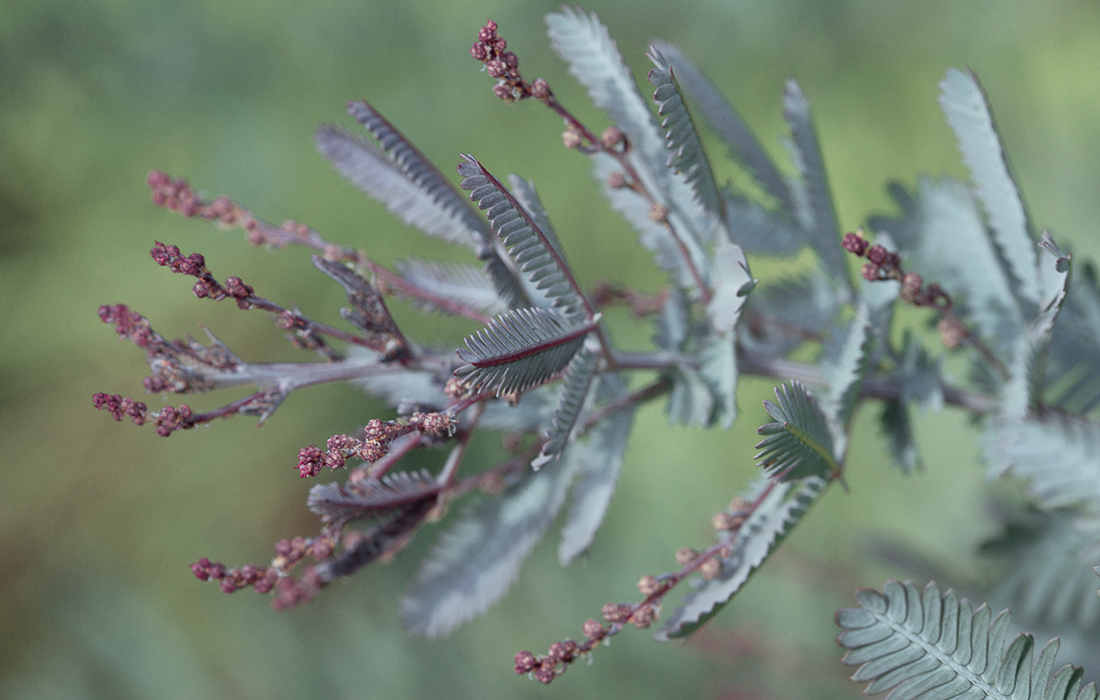
SHADE SHIFTER
Purple fernleaf acacia adds soft color to the landscape—young leaves are purple, morphing to gray as they age.
Shade Shifters
Throughout the Plant Kingdom there are specimens that reach outside the overwhelmingly common green scheme. Upping the interest quotient, some plants change color as they mature. Some of these have put down roots in Walkabout Australia.
The purple fernleaf acacia Acacia baileyana ‘purpurea’ is a small tree considered an evergreen because it doesn’t drop its leaves in winter. However, green is not its dominant hue. The feathery young foliage ranges from lavender to purple. As the leaves age, they turn bluish gray; the perfect backdrop for the stunning emerging leaves as well as its brilliant yellow blossoms. A wide canopy of gracefully weeping branches add to this tree’s dramatic appearance.
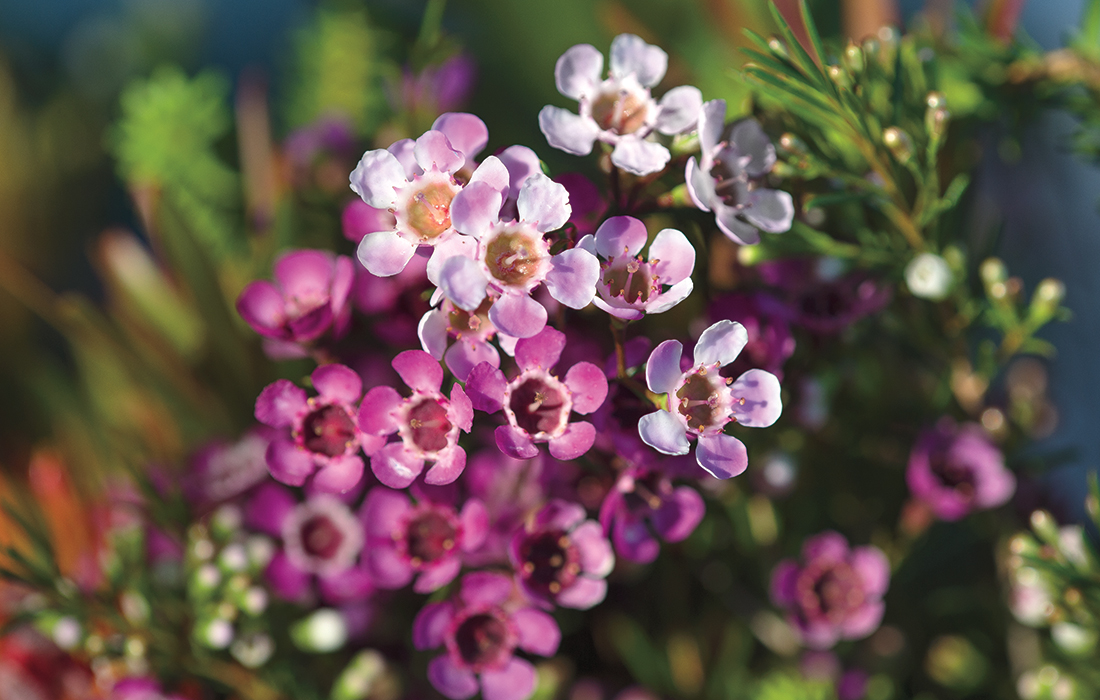
BEAUTIFUL BLOOMS
Geraldton wax flowers change color as they age. Combined with the plant’s long blooming period, they add a bit of a kaleidoscope effect in the garden.
If you find yourself walking through this new area days or weeks in a row, take note of the Geraldton wax flowers Chamelaucium ‘Matilida’. During its long blooming period (fall to late spring), the flowers change color as they mature. Peeping out from among the tight needlelike leaves, just-opened flowers are white, but soon a blush of reddish pink starts at the petal bases. Eventually, the entire structure is solid pink. With blossoms of different ages on the plant at the same time, the effect is fascinating!
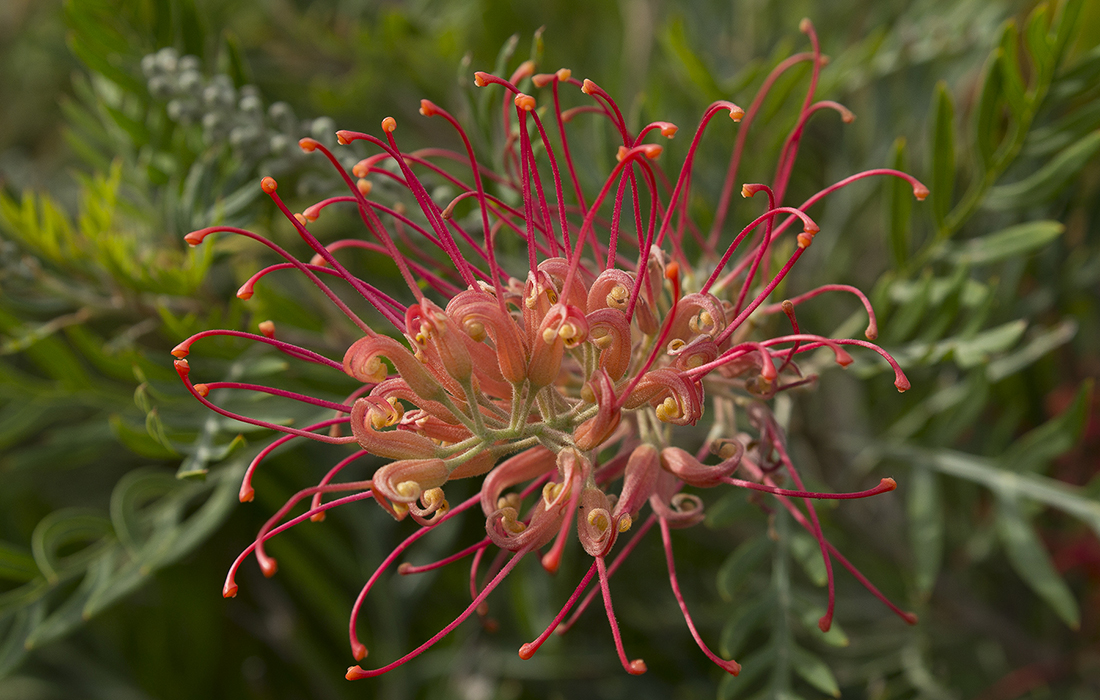
GROWING POPULARITY
Australian members of the Proteaceae family (such as this grevillea) are popular in Southern California landscapes. And why not? With their “unthirsty” nature and eye-catching blooms, these plants meet our water-wise garden needs.
Stunning Survivors
Grevillea, banksia, hakea, and other Australian members of the Proteaceae family make the most of a little. The tough, leathery leaves absorb moisture from coastal fog, taking full advantage of the limited water in their habitat. They’re able to survive—and thrive—in dry areas of Australia, and are increasingly popular choices for water-wise gardens in Southern California. They offer more than ease of care; their stunning forms and flowers add to the “eye-Q” of any spot.
As you journey through Walkabout Australia, watch for the unique cauliflower hakea Hakea corymbosa, with its pillowy cloud-shaped clusters of foliage. It produces juvenile shoots called water canes, which have longer leaves than the mature leaves. After about a year, the water canes fill out, forming a new puff to the structure.
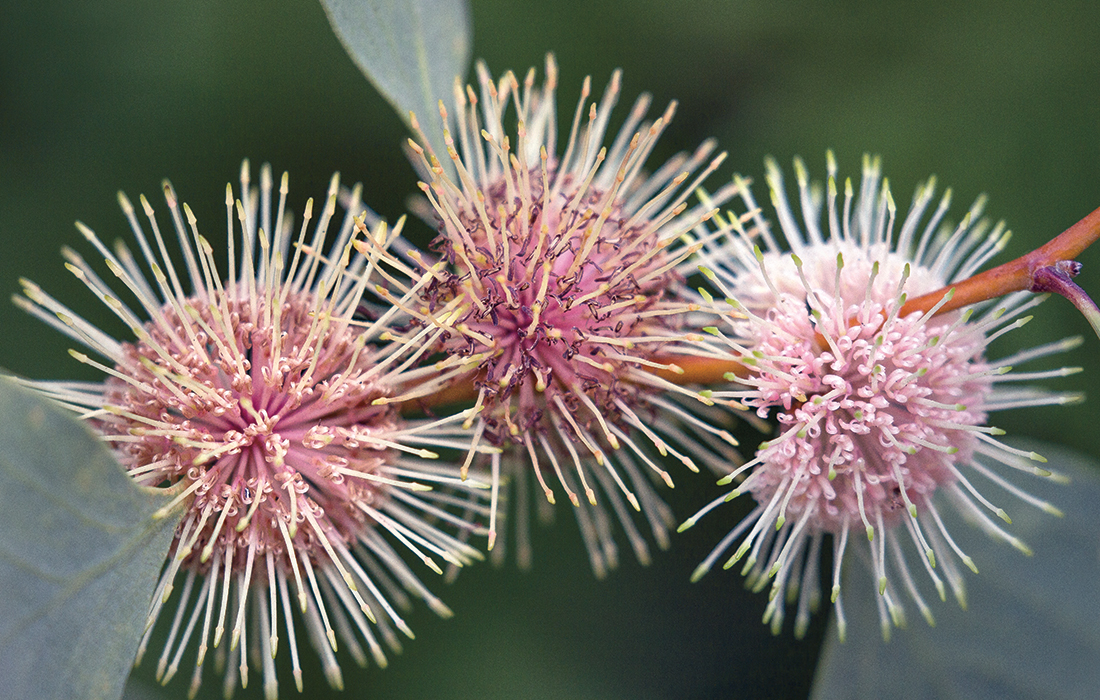
THE ‘WOW’ FACTOR
With tough, leather leaves and spectacular blooms, the sea urchin hakea is unlike any plant most people have seen.
One look at a flowering sea urchin hakea Hakea petiolaris, and the common name makes plenty of sense. When in bloom, this tree puts forth spherical clusters of up to 200 individual flowers. The long, cream-colored pistils that extend from each small blossom look like sea urchin spines to many people. Be sure to watch for them in bloom beginning in late fall—unless you travel to a small area in the southwest part of Western Australia, you may not have another chance to see such a beautiful, spiky sight.
Now that your interest in Australian plant life has sprouted, be sure to take in the “green scene” carefully created for you to “go walkabout” at the Park!

